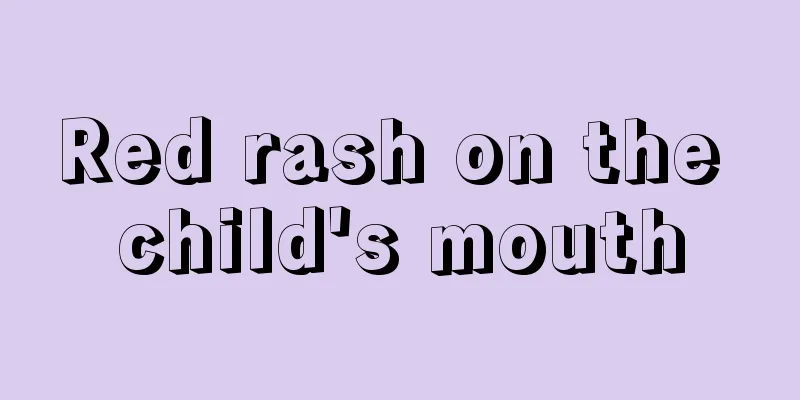Why is the baby's face yellow?

|
In our daily life, when we are raising babies, once mothers get together, they all discuss issues related to the babies, either the baby's health problems or the baby's diet problems. So what's going on if the baby's face turns yellow? Experts will give you a detailed answer so that parents can understand what are the reasons for the yellow face of the baby. High levels of a pigment called bilirubin in the blood can cause the skin to turn yellow. When old red blood cells in the blood break down, one of the products is bilirubin. Everyone has bilirubin in their blood. This bilirubin is normally removed from the blood by the liver and then excreted in the stool. Before your baby is born, your liver clears his bilirubin for him; after your baby is born, it takes some time for his liver to take over this job. Therefore, the pigment in the baby's blood accumulates, causing this yellow color to appear on his skin (also known as "neonatal jaundice"). This type of jaundice is called "physiological jaundice". It usually appears within 2 to 3 days after the baby is born, reaches its peak within 4 to 5 days, and disappears naturally within two weeks. For premature babies, jaundice usually peaks 5 to 7 days after birth and may take up to 2 months to slowly subside. This yellow color often appears first on the baby's face, then spreads down little by little to his neck and chest, and then expands downward. In some very rare cases of neonatal jaundice, the yellow color may spread to the baby's toes. symptom: Physiological jaundice - the jaundice is not dark in color, and the mother will find that the baby still has a good appetite, is in good spirits, and is not too noisy. It will disappear naturally in 7-10 days. Pathological jaundice - If the baby develops jaundice too early, or the symptoms are too severe or last for a long time, pathological jaundice should be suspected. Pathological jaundice usually has the following symptoms: Jaundice is very obvious in newborns within 24 hours after birth; Jaundice is all over the body, is orange-yellow in color, and becomes significantly darker in a short period of time; Jaundice subsides and then worsens or reappears; Jaundice does not improve or even becomes more obvious 2-3 weeks after onset; Your baby's stool is light or white, and his urine is dark yellow; Jaundice is accompanied by symptoms such as fever, refusal to feed, poor spirits, drowsiness, and dull eyes. What's wrong with the baby's face turning yellow? I believe that through the above introduction, mothers are also clear that there are two reasons for the baby's skin turning yellow. One is physiological yellowing. In this case, mothers just need to observe more and then there is no need to pay attention to it after it naturally subsides. The other is pathological yellowing of the skin. Once pathological yellowing of the skin occurs, mothers must take the baby to see a doctor in time, so that the baby can recover as soon as possible. |
<<: What should I do if my baby cries hoarsely?
>>: Why does my baby cough with phlegm and hoarseness?
Recommend
What should a two-year-old baby eat if he has a bad stomach?
If a two-year-old baby has a bad stomach, it is r...
Frequent atrial premature beats and intraventricular dilation in children
In our country, there are still many children who...
What should I do if my child is allergic to crabs?
If a child is allergic to crabs, the first thing ...
Where should I apply warm water to a child with a fever?
Many children will have fever for some reasons in...
Can vitiligo in children be cured?
Vitiligo is a skin disease that is very common cl...
How to make shrimp porridge for babies?
Drinking porridge is a way of eating that people ...
What is the reason why children urinate frequently at night?
Why do children urinate frequently? Many parents ...
What foods are good for children with night sweats
Night sweats in children are actually quite commo...
What foods can children eat to nourish their stomachs?
Children's stomach function is not yet fully ...
What causes red and swollen ears in children?
What causes red and swollen ears in children? Red...
Why does my child cough occasionally?
Parents pay close attention to their baby's e...
Why does the baby hum when sleeping?
When babies are young, there are always some situ...
What to do if your child coughs in the middle of the night
Summer has arrived, the weather has become very h...
Why does the child's face turn yellow?
Many people will have an abnormal complexion due ...
Nephrotic syndrome mortality in children
Many children suffer from pediatric kidney diseas...









